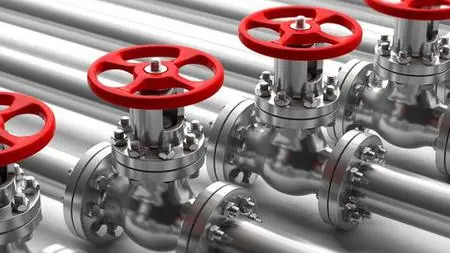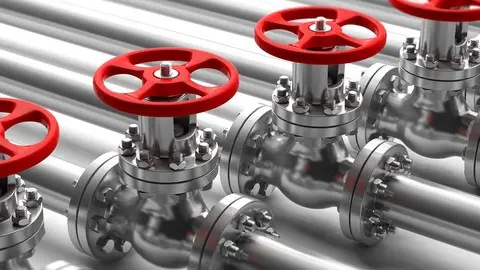Control Valve Basics (Engineering, Oil And Gas Industry)
Last updated 12/2021
MP4 | Video: h264, 1280x720 | Audio: AAC, 44.1 KHz
Language: English | Size: 1.21 GB | Duration: 1h 32m
Last updated 12/2021
MP4 | Video: h264, 1280x720 | Audio: AAC, 44.1 KHz
Language: English | Size: 1.21 GB | Duration: 1h 32m
Learn about valve terminology, components, nomenclature and how valves work! Ideal for all engineering industries!
What you'll learn
How valves are named.
What linear and rotary valves are.
All of a valve's main components.
How valves work (ball, butterfly, diaphragm, gate, globe, safety, relief, pinch etc.).
How to choose the correct valve for a certain application.
Advantages and disadvantages associated with each valve type.
Requirements
A desire to learn.
Some engineering background knowledge would be an advantage but is not essential.
Description
Every engineering process requires the ability to stop, start and regulate (throttle) flow. Valves are thus a fundamental part of any system that conveys gases, liquids or solids. But what are valves? How do they work? And why do they have such weird names e.g. butterfly valve? This course will help you answer all of these questions and many more! You will learn:How valves are named.What linear and rotary motion valves are.All of a valve's main components. How common valve types work (ball, butterfly, diaphragm, gate, globe, safety, relief, pinch etc.).How to choose the correct valve for a certain application.How to identify valves visually.Advantages and disadvantages associated with each valve type. This course will give you all the information you need to know about each valve type and can also be used later as a refresher course. Irrespective of your engineering background (oil and gas, chemical engineering, HVAC, mechanical engineering, automotive engineering etc.), this course will enrich your engineering career because valves are truly everywhere!Why this course?Because saVRee and saVRee lite have trained over 5,000 students on Udemy with an average course rating of 4.7/5.0!Interactive 3D models are used extensively to show you exactly how valves and their components work. Checkout the free preview videos before signing-up because we know you won't be disappointed!The course is packed with 2D images, 2D animations and 3D animations.Written content has been read aloud so that you can 'learn on the go' without needing to watch the screen constantly.Don't waste more time reading this course description, check-out the free preview videos and the curriculum, then make an informed decision.All purchases come with a 30 days refund policy.saVRee lite courses are extracts taken from our main -and much longer- saVRee courses. Please do not purchase this course if you have already purchased our Introduction to Valves course.Hope to see you on the course!
Overview
Section 1: Primer - Overview of Valve Types
Lecture 1 Short Introduction to Valves
Section 2: Welcome To The Course
Lecture 2 Welcome To The Course
Section 3: Introduction
Lecture 3 How Do Valves Get Their Names?
Lecture 4 Common Valve Types
Lecture 5 Purpose of a Valve and its Construction
Lecture 6 Rotary and Linear Motion Valves
Lecture 7 Valve Construction and Components
Lecture 8 Valve Actuators
Lecture 9 Pressure Drop
Lecture 10 Response Time
Lecture 11 Length of Travel
Section 4: Valves Types
Lecture 12 Ball
Lecture 13 Butterfly
Lecture 14 Diaphragm
Lecture 15 Gate
Lecture 16 Globe
Lecture 17 Pinch
Lecture 18 Plug
Section 5: Basic Course Final Thoughts
Lecture 19 Basic Course Final Thoughts
Section 6: Bonus Lectures
Lecture 20 Discount Course Coupons
Lecture 21 FREE saVRee Engineering Apps
Lecture 22 FREE Access to saVRee 3D Models
Section 7: Resources
Lecture 23 Offline Quiz Booklet
Lecture 24 Gate Valve Infographic
Lecture 25 Ball Valve Infographic
Lecture 26 Swing Check Valve Infographic
Lecture 27 Butterfly Valve Infographic
Lecture 28 Plug Valve Infographic
Lecture 29 Globe Valve Infographic
Lecture 30 Diaphragm Valve Infographic
Lecture 31 Interactive 3D Models
This course would benefit anyone working in the engineering world…because valves are everywhere!,Particular benefit is for anyone in the oil & gas, HVAC, chemical engineering, mechanical engineering or power engineering industries.



